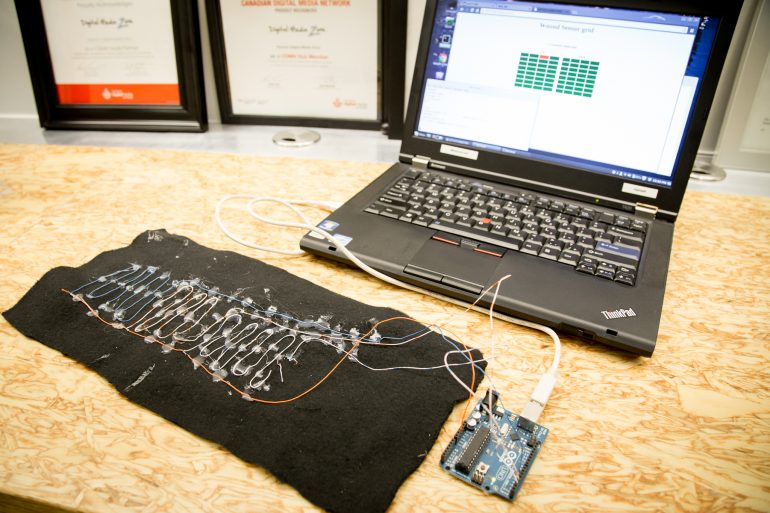Last week’s Hack’n’Talk event at Ryerson University’s new Fashion Zone brought together entrepreneurs, researchers, designers and developers to participate in a 24-hours open hacking session where they created new products and solutions within fashion and technology.
Among some of the new technologies to be developed were wound-sensing technology and even “wireless umbilical cords”. Around 148 attendees took part over the weekend to create 18 different teams and projects. Of those 148, 60 participants took part at the open hack session.
Local CEOs and founders of maker communities were on hand to provide expertise and seminars in wearable technology and digital fabrication. There were also electronic tools, 3D printers and laser cutters available for all participants to help them build their prototypes.
“We gave people the opportunity to explore and stretch their creativity without the trappings of commercial viability or monetization potential stifling their ideas,” said HackerNest’s Shaharris Beh. “The projects that emerged were so much more interesting and diverse because of that.”
Lloyd Grey and RJ White ended up creating the prototype for the wound-sensing technology, which seemed to be directed towards military uses. “The original idea was to monitor bullet proof vests, because they are not really bullet proof – they are bullet resistant – and it is useful to know if it is been punctured. We then worked around from that idea and came up with the wound sensing technology that could tell if the soldier was wounded or not and at which area of the body,” said Grey. “The idea laid around for months, and Hack’n’Talk was a chance to play with the technology I don’t normally use in my everyday life.”
The “Wireless Umbilical Cord” was an attempt to prolong the intimate connection that forms between mother and child in the womb.
“We used heart pulse sensors, Arduinos and Raspberry Pis to wirelessly transmit mother and baby’s heartbeat to the other, converting it to a haptic interface and providing soothing comfort to the infant while potentially easing separation anxiety for the mother after birth,” said Adriana Ieraci. “The hackathon was a focused opportunity to challenge ourselves as a team in a fun, creative, and inspiring context.”
Meanwhile another project sought to create a bracelet that notifies users when they’re in areas with higher levels of crime. PerSec is a “fashionable and elegantly design bracelet that can be worn by travelers, children and first year University students.” “Many safety bodies say that being aware of your environment is an important aspect of improving your personal safety,” said Leotis Buchanan. “Our bracelet makes its wearer aware of the crime level at there current location by discretely changing color, depending on the historical level of crime within a 2 mile radius of the wearer present location.




